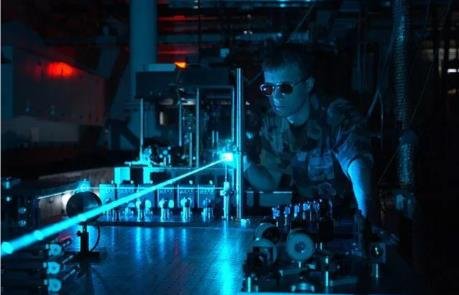How is physics related to technology: How Physics Shapes Technology

Physics, the fundamental study of matter, energy, and their interactions, forms the very bedrock upon which technology is built. It’s a relationship of constant give and take, where discoveries in physics pave the way for technological marvels and advancements in technology open doors to new physical phenomena. This intricate dance shapes our world in profound ways How is physics related to technology.
From the Basic Building Blocks to Everyday Devices
Physics provides the foundational knowledge required to understand the materials and forces that make up our technological landscape. Let’s delve into a few key areas:
- Mechanics: This branch of physics deals with motion and its causes. It underpins the design of everything from simple machines like levers and pulleys to complex mechanisms in cars, airplanes, and robots. Understanding forces like friction and gravity allows engineers to optimize efficiency and safety in these machines.
- Electricity and Magnetism: Electromagnetism, the force that governs the interaction between electrically charged particles, is the lifeblood of modern technology. From the basic circuits that power our devices to the intricate workings of transistors, the fundamental principles of electromagnetism are crucial for creating and manipulating electrical currents.
- Thermodynamics: This field explores the relationship between heat, work, and temperature. It plays a vital role in understanding energy conversion in power plants, the design of internal combustion engines, and even the development of refrigerators and air conditioners How is physics related to technology.
These are just a few examples, but the
Influence of physics extends to nearly every facet of technology. From the semiconductors that form the heart of computers to the lasers used in communication systems, a deep understanding of physical principles is essential for creating and refining these technologies.
Physics as a Tool for Innovation
Physics not only provides the building blocks but also equips us with powerful tools to push the boundaries of technology. Here’s how:
- Modeling and Simulation: Physicists develop sophisticated computer models to simulate complex phenomena. These simulations allow engineers to virtually test and optimize designs before building physical prototypes, saving time and resources.
- Materials Science: Physics plays a crucial role in understanding the properties of materials. This knowledge is instrumental in developing new materials with specific characteristics, like stronger, lighter alloys for airplanes or superconductors for efficient energy transport.
- Nanotechnology: This rapidly evolving field deals with manipulating matter at the atomic and molecular level. Physics principles like quantum mechanics are essential for understanding the behavior of materials at this scale, paving the way for the development of revolutionary new technologies like nanoelectronics and advanced medical treatments.
By providing a deeper understanding of the universe and the forces that govern it, physics empowers us to constantly innovate and create next-generation technologiesHow is physics related to technology.
Unveiling the Mysteries of the Universe: Technology’s Role in Physics
Technology doesn’t just benefit from physics; it also plays a crucial role in furthering our physical understanding. Here are some ways technology aids physicists:
- Scientific Instruments: Powerful telescopes, microscopes, and particle accelerators allow scientists to observe phenomena that would otherwise be invisible to the naked eye. These instruments, themselves marvels of engineering based on physics principles, help us probe the depths of space, the building blocks of matter, and the fundamental forces of nature.
- Data Analysis: The vast amount of data generated by modern scientific experiments requires sophisticated computer analysis tools. Physics and computer science come together to develop these tools, allowing scientists to extract meaningful insights from complex datasets.
- Space Exploration: Rockets, satellites, and robotic probes are all products of technological advancements based on physics. These tools enable scientists to study the universe from a vantage point beyond Earth’s atmosphere, leading to groundbreaking discoveries in areas like cosmology and astrophysics.
The synergy between physics and technology is a two-way street, with each field fueling the progress of the other. Technology allows us to explore the universe’s mysteries, and these discoveries, in turn, inspire the creation of new technologies How is physics related to technology.
The Ever-Evolving Landscape: Future Implications
The relationship between physics and technology is a constantly evolving one. As we delve deeper into fundamental questions about the universe, new areas like quantum computing and artificial intelligence are emerging. These advancements have the potential to revolutionize various fields, from materials science and medicine to communication and artificial intelligence.
Looking ahead, some of the key areas where physics and technology are likely to converge include:
Understanding Dark Matter and Dark Energy
These mysterious components make up most of the universe’s mass and energy, yet their nature remains unknown. New technologies and experiments may shed light on these enigmas, leading to a more complete understanding of the universe.
Unifying the Forces of Nature
Currently, the four fundamental forces—gravity, electromagnetism, strong nuclear force, and weak nuclear force—are described by separate theories. A unified theory of everything could be a groundbreaking discovery, revolutionizing our understanding of physics and potentially leading to new technologies How is physics related to technology.





